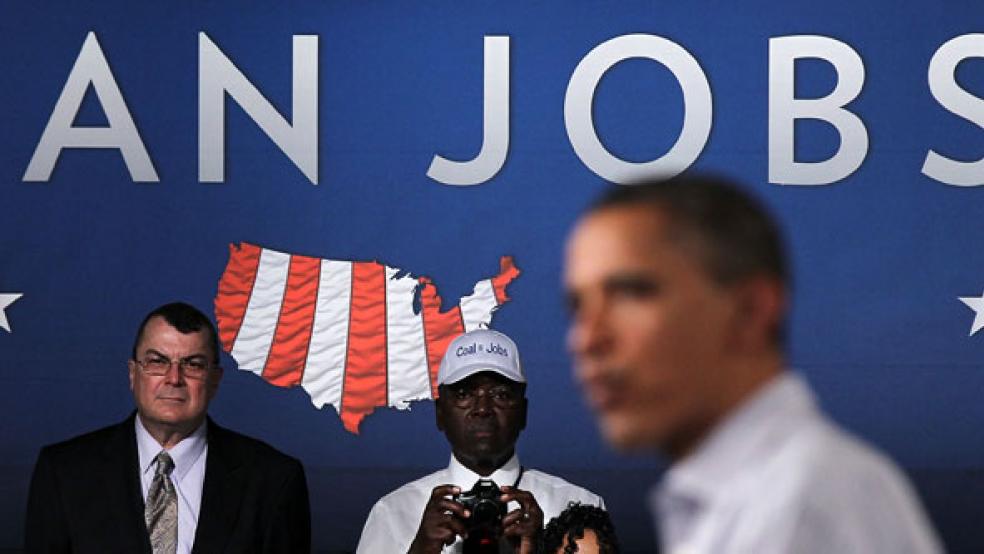Don’t expect the Occupy Wall Street folks to fold their tents, pack up their bullhorns and go home after reading this morning’s October employment data. True, the unemployment rate finally dipped slightly – to 9 percent from 9.1 percent – while hourly earnings climbed 0.2 percent, as expected. And yes, the government minions who spend their time tracking who created how many jobs nationwide admitted they goofed and undercounted by 102,000 jobs the number of new positions created in August and September.
But the harsh truth remains that the unemployment rate today is still stuck at the highest levels we’ve seen since the Great Depression of the 1930s (aside from a brief blip in the 1980s.) At the current rate – 80,000 new jobs were created in October, fewer than the 95,000 economists had expected – the unemployment rate won’t be coming back down to 6 percent, at least not any time soon. After all, as University of Maryland professor Peter Morici pointed out, it requires 130,000 new jobs each month just to keep up with population growth. While some economists draw comfort from the upward revisions to prior months’ data, that’s just not enough, especially when the “real” unemployment rate – a figure that includes those who hold part-time jobs because that’s all they can find, or those who have given up looking – is closer to 16 percent.
That’s the same big picture context under which two teams squared off last month to debate the question of whether Congress should pass President Obama’s jobs plan – piecemeal, if necessary. The debate, held under the auspices of Intelligence Squared US, pitted Moody’s Analytics economist Mark Zandi and Princeton University policy wonk Cecilia Rouse against Richard Epstein, an NYU law professor, and Dan Mitchell of the Cato Institute, with the latter duo arguing that what’s needed for the economy to rebound and ultimately create new jobs is structural reform, not what Mitchell called “faux stimulus.”
Not surprisingly, given the fact that the median length of time that people remain unemployed still hovers above 20 weeks – close to an all-time record – it was Zandi’s team who captured the votes from the audience and walked away the evening’s winners, in large part thanks to Zandi equating the American Jobs Act to an emergency vehicle that rushes to the scene of an accident to save lives. That doesn’t mean that lawmakers are prevented from taking longer-term steps as well, Zandi argued, just that this kind of stimulus is what the economy needs to stop it from tipping over into recession again.
The losers went home grumpy. “If we’re going to save America from becoming another Greece, we better figure out how to educate people who have been lured into thinking government is Santa Claus,” Dan Mitchell blogged a few days later. But today’s jobs data clearly show the government is behaving more like a Grinch: While the private sector added jobs last month, the government cut 24,000 positions nationwide.
For the United States to get back to a more tolerable unemployment rate of 6 percent, Morici points we would need to add 368,000 new jobs each month for the next three years. That’s going to require both the short-term solutions that Zandi and Rouse argued in favor of at the debate and the long-term structural fixes their opponents advocated. It’s not an either-or question.





